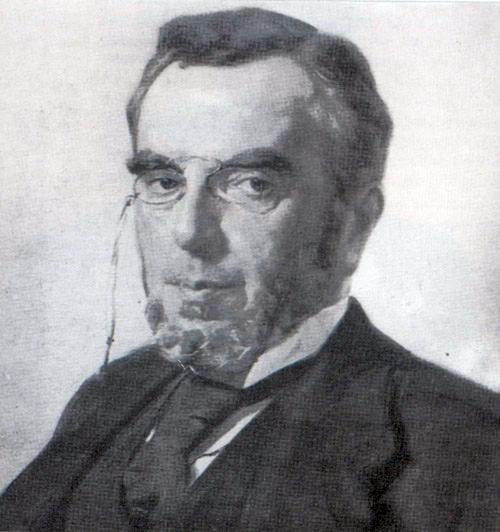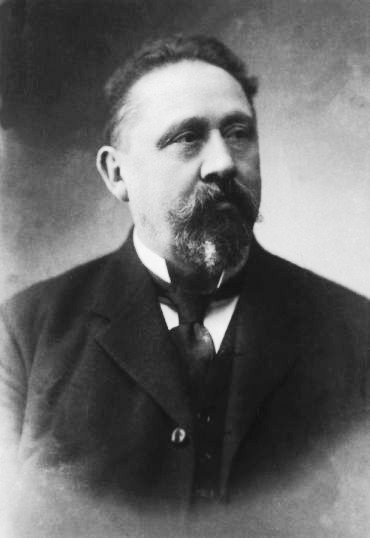|
1896 In Architecture
The year 1896 in architecture involved some significant events. Events * February 21 — The original Union Station (Providence), Union Station in Providence, Rhode Island was destroyed by fire. * April 16 – The National Trust for Places of Historic Interest or Natural Beauty, National Trust in England acquires its first building for preservation, Alfriston Clergy House, a 14th century Wealden hall house. * ''A History of Architecture'' by Sir Banister Fletcher is published. * Construction of Gasometer, Vienna, begins. * The Arts and Crafts movement house Munstead Wood in Surrey, England, is designed by architect Edwin Lutyens for garden designer Gertrude Jekyll, his first major commission and the start of an influential partnership. * Casa Martí in Barcelona designed by Josep Puig i Cadafalch. * Millennial exhibition commemorating the Hungarian conquest of the Carpathian Basin in Budapest: Vajdahunyad Castle is built in City Park (Budapest), City Park by Ignác Alpár, incorpor ... [...More Info...] [...Related Items...] OR: [Wikipedia] [Google] [Baidu] |
Union Station (Providence)
Union Station describes two distinct, defunct train stations in Providence, Rhode Island. Parts of the latter one were renovated and the building contains offices and restaurants. Union Station (1847–1887) The original Union Station was Providence's first, opening in 1848 to accommodate the needs of the newly thriving city. This building was designed by 21 year old Rhode Island architect, Thomas Alexander Tefft in the Lombard Romanesque style. Construction of the station was supervised by Tallman & Bucklin. Extending 720 feet along the edge of Exchange Place, the structure was the largest railroad station in the United States the time of its construction. The building has also been dubbed longest building in the country at the time, though this assertion is disputed. In 1885, ''American Architect and Building News'' voted the building one of the 20 best buildings in the country. 20th century architectural historian Henry-Russell Hitchcock wrote of the station, "without ... [...More Info...] [...Related Items...] OR: [Wikipedia] [Google] [Baidu] |
Hungarian Conquest Of The Carpathian Basin
The Hungarian conquest of the Carpathian Basin, also known as the Hungarian conquest or the Hungarian land-taking (), was a series of historical events ending with the settlement of the Hungarians in Central Europe in the late 9th and early 10th century. Before the arrival of the Hungarians, three early medieval powers, the First Bulgarian Empire, East Francia, and Moravia, had fought each other for control of the Carpathian Basin. They occasionally hired Hungarian horsemen as soldiers. Therefore, the Hungarians who dwelt on the Pontic steppes east of the Carpathian Mountains were familiar with their future homeland when their conquest started. Archaeogenetic studies confirmed the Asian origin of the conquerors. The Hungarian conquest started in the context of a "late or 'small' migration of peoples". Contemporary sources attest that the Hungarians crossed the Carpathian Mountains following a joint attack by the Pechenegs and Bulgarians in 894 or 895. They first took control ... [...More Info...] [...Related Items...] OR: [Wikipedia] [Google] [Baidu] |
Anastasios Metaxas
Anastasios Metaxas ( el, Αναστάσιος Μεταξάς; 27 February 1862 – 28 January 1937) was a Greek architect and shooter. Biography Metaxas was the royal architect of George I of Greece and is best known for being the architect chosen by George Averoff to restore also the Panathinaiko Stadium for the 1896 Summer Olympics in Athens, the birth of the modern Olympic movement, while the design was from Ernst Ziller. He studied architecture at University of Dresden and passed with honours, in his time he would also expand or reform many historic buildings including the Benaki Museum and the National Archaeological Museum, Athens to name a couple. Other works of his include the design for St Andrew's Cathedral, Patras and various public buildings and mansions in Athens. Metaxas was also an avid shooter and would appear in four Summer Olympics and win two medals, he firstly competed in the 1896 Summer Olympics in the stadium he helped restore, he entered the 200 metre mi ... [...More Info...] [...Related Items...] OR: [Wikipedia] [Google] [Baidu] |
Athens
Athens ( ; el, Αθήνα, Athína ; grc, Ἀθῆναι, Athênai (pl.) ) is both the capital and largest city of Greece. With a population close to four million, it is also the seventh largest city in the European Union. Athens dominates and is the capital of the Attica region and is one of the world's oldest cities, with its recorded history spanning over 3,400 years and its earliest human presence beginning somewhere between the 11th and 7th millennia BC. Classical Athens was a powerful city-state. It was a centre for the arts, learning and philosophy, and the home of Plato's Academy and Aristotle's Lyceum. It is widely referred to as the cradle of Western civilization and the birthplace of democracy, largely because of its cultural and political influence on the European continent—particularly Ancient Rome. In modern times, Athens is a large cosmopolitan metropolis and central to economic, financial, industrial, maritime, political and cultural life in Gre ... [...More Info...] [...Related Items...] OR: [Wikipedia] [Google] [Baidu] |
Panathinaiko Stadium
The Panathenaic Stadium ( el, Παναθηναϊκό Στάδιο, Panathinaïkó Stádio, ), as spelled by Philostratus. or ''Kallimarmaro'' (Καλλιμάρμαρο, , lit. "beautiful marble") is a multi-purpose stadium in Athens, Greece. One of the main historic attractions of Athens, it is the only stadium in the world built entirely of marble. A stadium was built on the site of a simple racecourse by the Athenian statesman Lykourgos (Lycurgus) BC, primarily for the Panathenaic Games. It was rebuilt in marble by Herodes Atticus, an Athenian Roman senator, by 144 AD it had a capacity of 50,000 seats. After the rise of Christianity in the 4th century it was largely abandoned. The stadium was excavated in 1869 and hosted the Zappas Olympics in 1870 and 1875. After being refurbished, it hosted the opening and closing ceremonies of the first modern Olympics in 1896 and was the venue for 4 of the 9 contested sports. It was used for various purposes in the 20th century and was ... [...More Info...] [...Related Items...] OR: [Wikipedia] [Google] [Baidu] |
Olympic Games
The modern Olympic Games or Olympics (french: link=no, Jeux olympiques) are the leading international sporting events featuring summer and winter sports competitions in which thousands of athletes from around the world participate in a variety of competitions. The Olympic Games are considered the world's foremost sports competition with more than 200 teams, representing sovereign states and territories, participating. The Olympic Games are normally held every four years, and since 1994, have alternated between the Summer and Winter Olympics every two years during the four-year period. Their creation was inspired by the ancient Olympic Games (), held in Olympia, Greece from the 8th century BC to the 4th century AD. Baron Pierre de Coubertin founded the International Olympic Committee (IOC) in 1894, leading to the first modern Games in Athens in 1896. The IOC is the governing body of the Olympic Movement (which encompasses all entities and individuals involved in the Oly ... [...More Info...] [...Related Items...] OR: [Wikipedia] [Google] [Baidu] |
1896 Summer Olympics
The 1896 Summer Olympics ( el, Θερινοί Ολυμπιακοί Αγώνες 1896, Therinoí Olympiakoí Agónes 1896), officially known as the Games of the I Olympiad ( el, Αγώνες της 1ης Ολυμπιάδας, Agónes tis 1is Olympiádas) and commonly known as Athens 1896 ( el, Αθήνα 1896), was the first international Olympic Games held in modern history. Organised by the International Olympic Committee (IOC), which had been created by French aristocrat Pierre de Coubertin, it was held in Athens, Greece, from 6 to 15 April 1896. Fourteen nations (according to the IOC, though the number is subject to interpretation) and 241 athletes (all males; this number is also disputed) took part in the games. Participants were all European, or living in Europe, with the exception of the United States at the 1896 Summer Olympics, United States team. Over 65% of the competing athletes were Greek. Winners were given a silver medal, while runners-up received a copper medal. ... [...More Info...] [...Related Items...] OR: [Wikipedia] [Google] [Baidu] |
Berlin-Charlottenburg Theater Des Westens 05-2014
Charlottenburg () is a locality of Berlin within the borough of Charlottenburg-Wilmersdorf. Established as a town in 1705 and named after Sophia Charlotte of Hanover, Queen consort of Prussia, it is best known for Charlottenburg Palace, the largest surviving royal palace in Berlin, and the adjacent museums. Charlottenburg was an independent city to the west of Berlin until 1920 when it was incorporated into "Groß-Berlin" (Greater Berlin) and transformed into a borough. In the course of Berlin's 2001 administrative reform it was merged with the former borough of Wilmersdorf becoming a part of a new borough called Charlottenburg-Wilmersdorf. Later, in 2004, the new borough's districts were rearranged, dividing the former borough of Charlottenburg into the localities of Charlottenburg proper, Westend and Charlottenburg-Nord. Geography Charlottenburg is located in Berlin's inner city, west of the Großer Tiergarten park. Its historic core, the former village green of Alt Lietzow ... [...More Info...] [...Related Items...] OR: [Wikipedia] [Google] [Baidu] |
Hungarian Parliament Building
The Hungarian Parliament Building ( hu, Országház , which translates to "House of the Country" or "House of the Nation"), also known as the Parliament of Budapest after its location, is the seat of the National Assembly of Hungary, a notable landmark of Hungary, and a popular tourist destination in Budapest. It is situated on Kossuth Square in the Pest side of the city, on the eastern bank of the Danube. It was designed by Hungarian architect Imre Steindl in neo-Gothic style and opened in 1902. It has been the largest building in Hungary since its completion. History Budapest was united from three cities in 1873, namely Buda, Óbuda, and Pest. Seven years later the Diet resolved to establish a new, representative parliament building, expressing the sovereignty of the nation. The building was planned to face the Danube River. An international competition was held, and Imre Steindl emerged as the victor; the plans of two other competitors were later also realized in the form ... [...More Info...] [...Related Items...] OR: [Wikipedia] [Google] [Baidu] |
Kingdom Of Hungary
The Kingdom of Hungary was a monarchy in Central Europe that existed for nearly a millennium, from the Middle Ages into the 20th century. The Principality of Hungary emerged as a Christian kingdom upon the coronation of the first king Stephen I at Esztergom around the year 1000;Kristó Gyula – Barta János – Gergely Jenő: Magyarország története előidőktől 2000-ig (History of Hungary from the prehistory to 2000), Pannonica Kiadó, Budapest, 2002, , p. 687, pp. 37, pp. 113 ("Magyarország a 12. század második felére jelentős európai tényezővé, középhatalommá vált."/"By the 12th century Hungary became an important European factor, became a middle power.", "A Nyugat részévé vált Magyarország.../Hungary became part of the West"), pp. 616–644 his family (the Árpád dynasty) led the monarchy for 300 years. By the 12th century, the kingdom became a European middle power within the Western world. Due to the Ottoman occupation of the central and south ... [...More Info...] [...Related Items...] OR: [Wikipedia] [Google] [Baidu] |
Ignác Alpár
Ignác Alpár József (born Schöckl József; 17 January 1855 in Pest – 27 April 1928 in Zürich) was a Hungarian architect.Ignác Alpár , retrieved 6 May 2012 Career Alpár began his career as a stonemason, then worked under architect . After completing formal studies in , he returned to |

.jpg)






